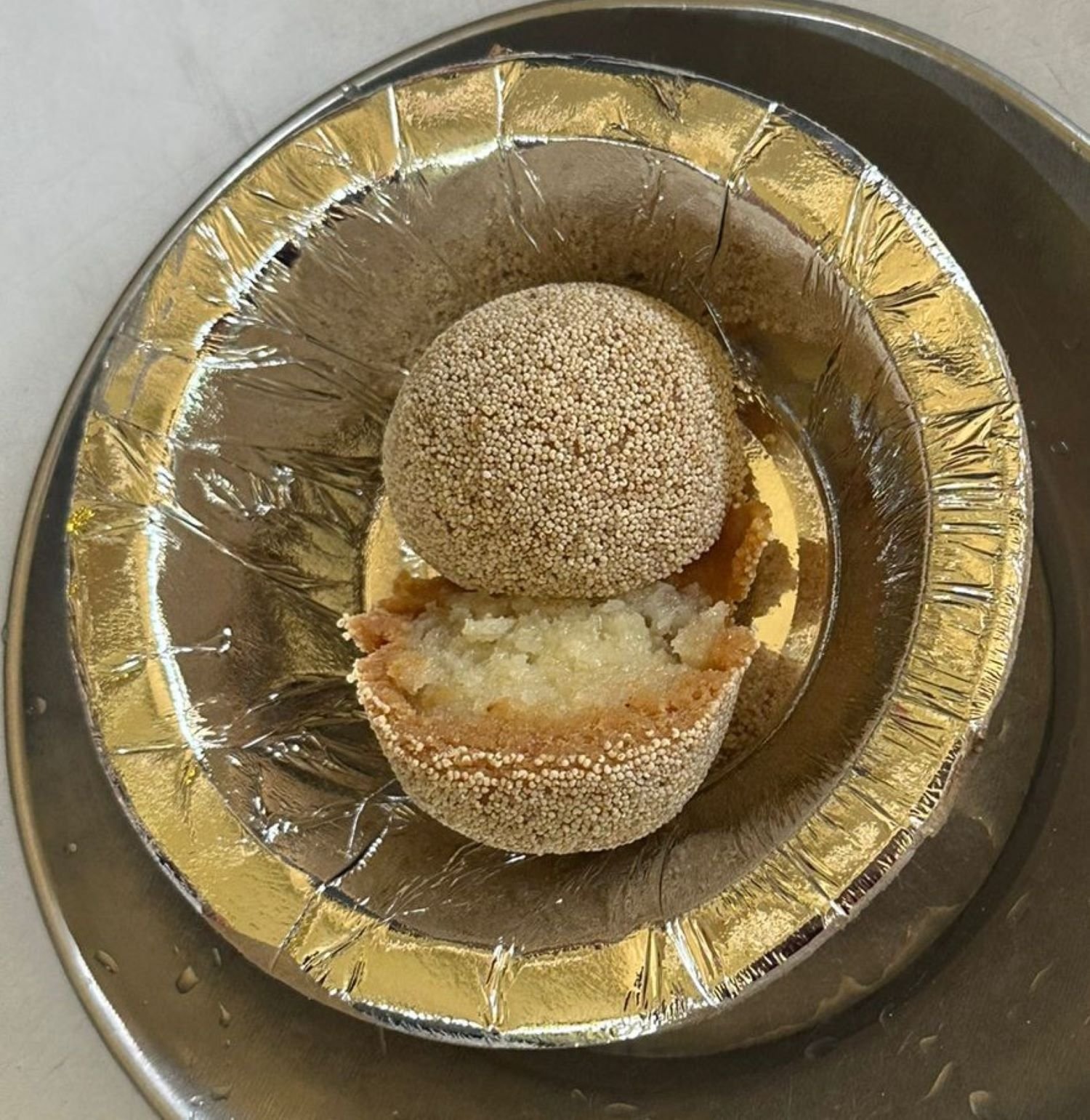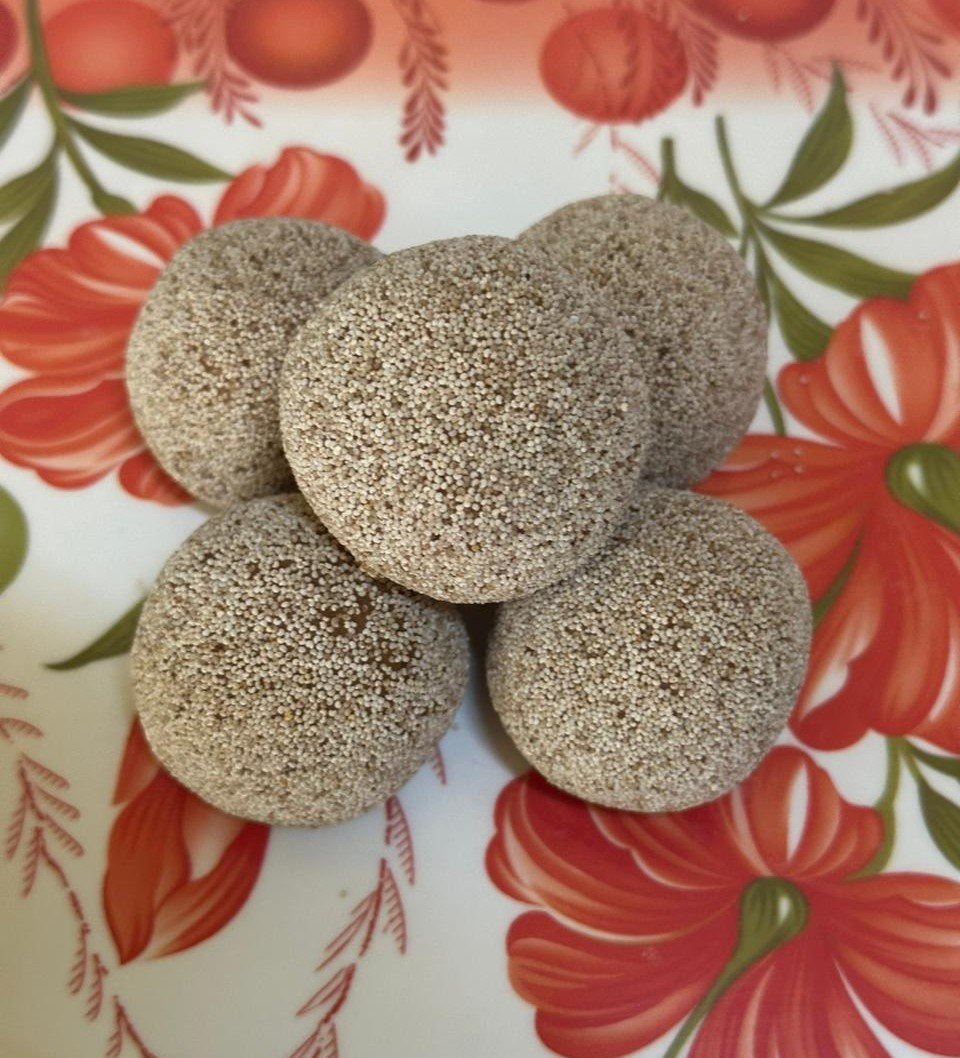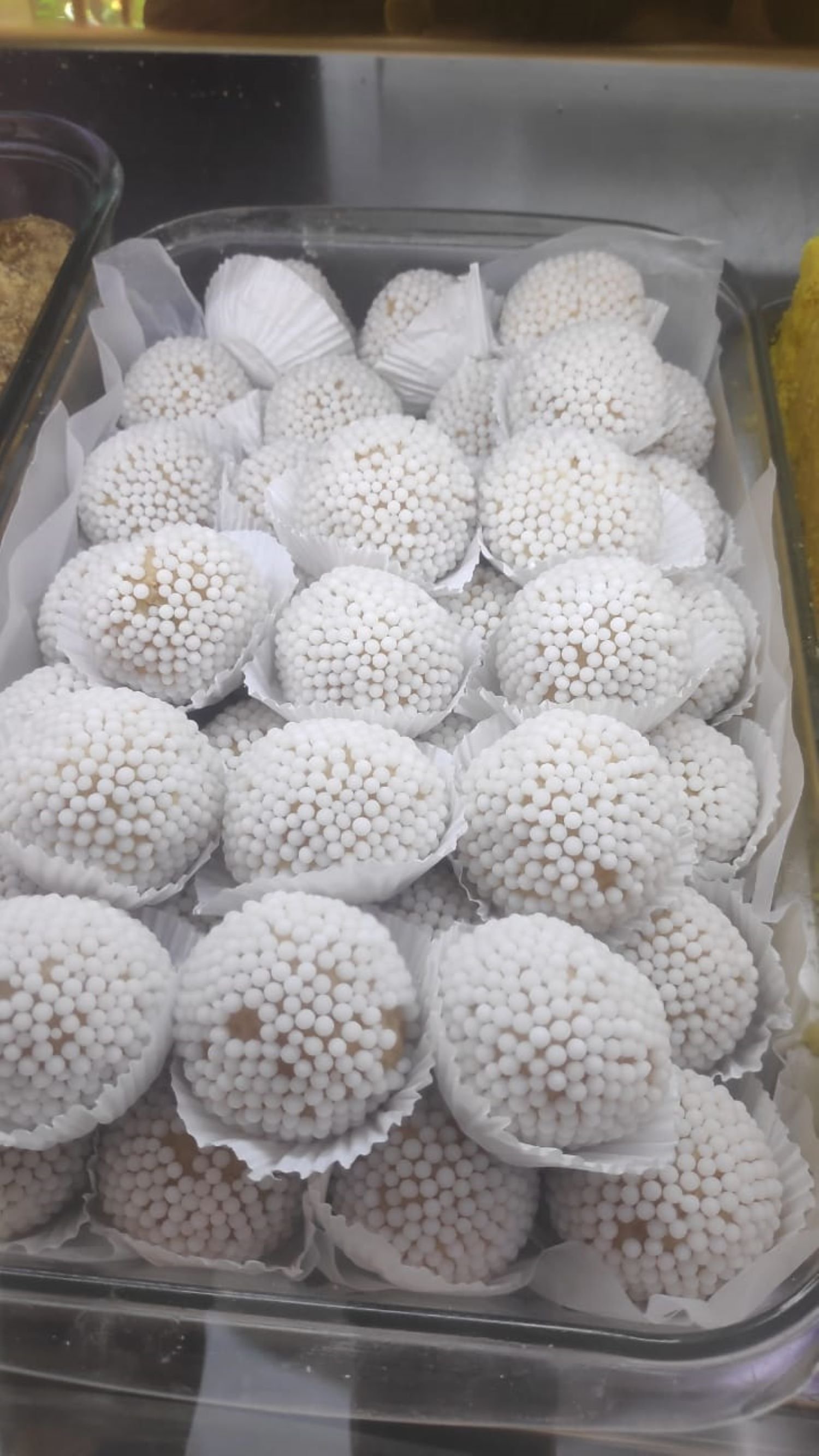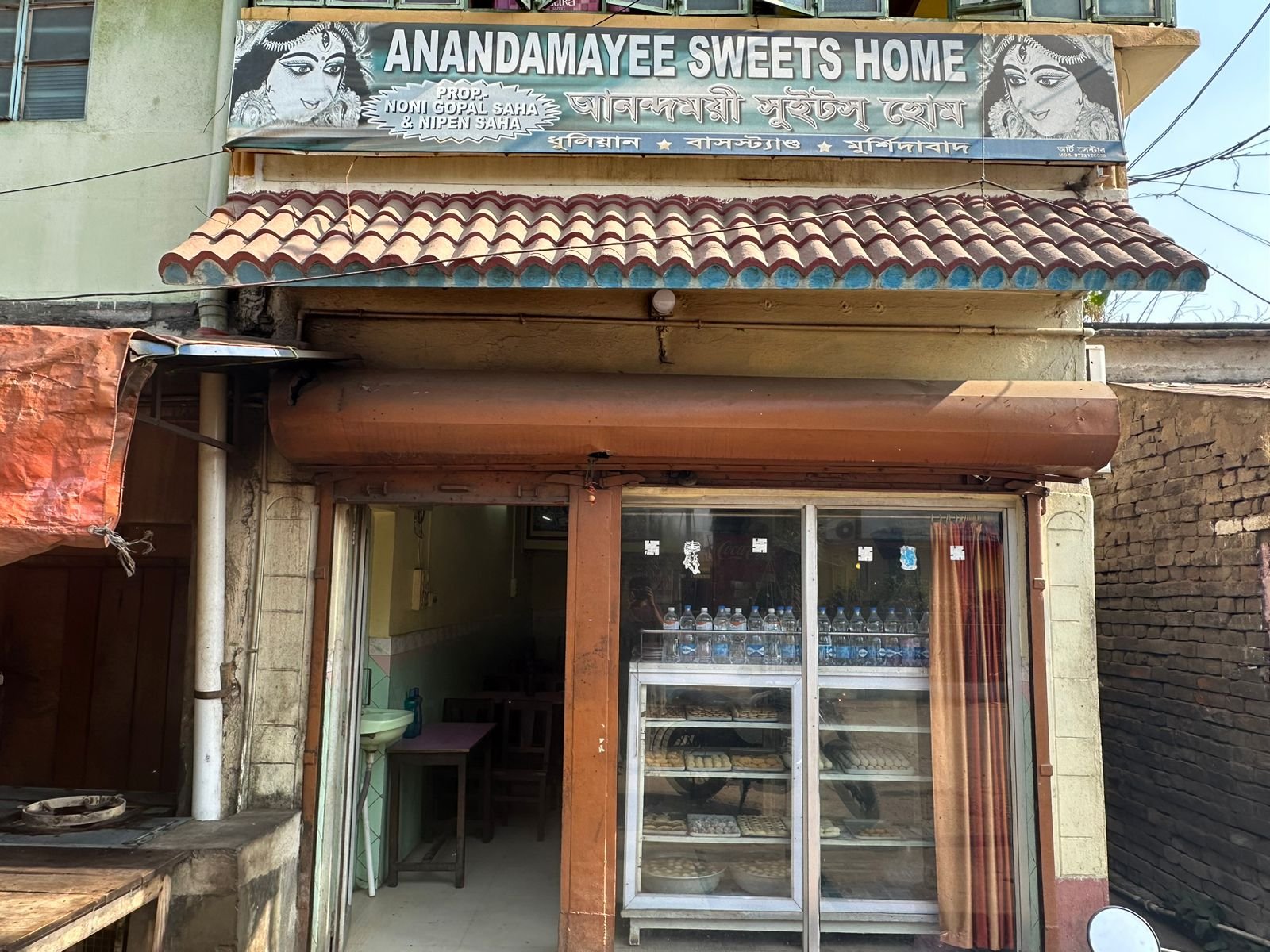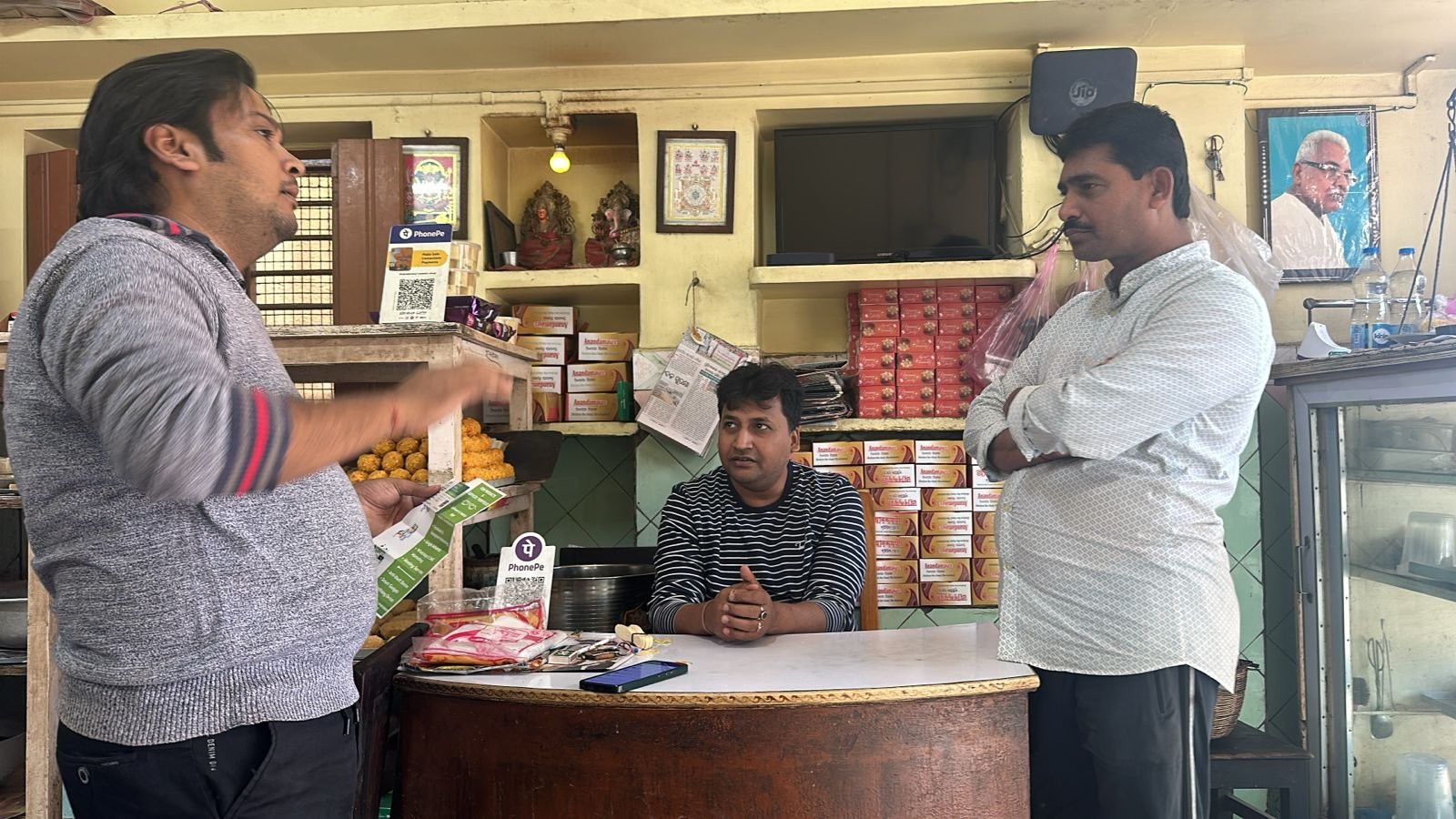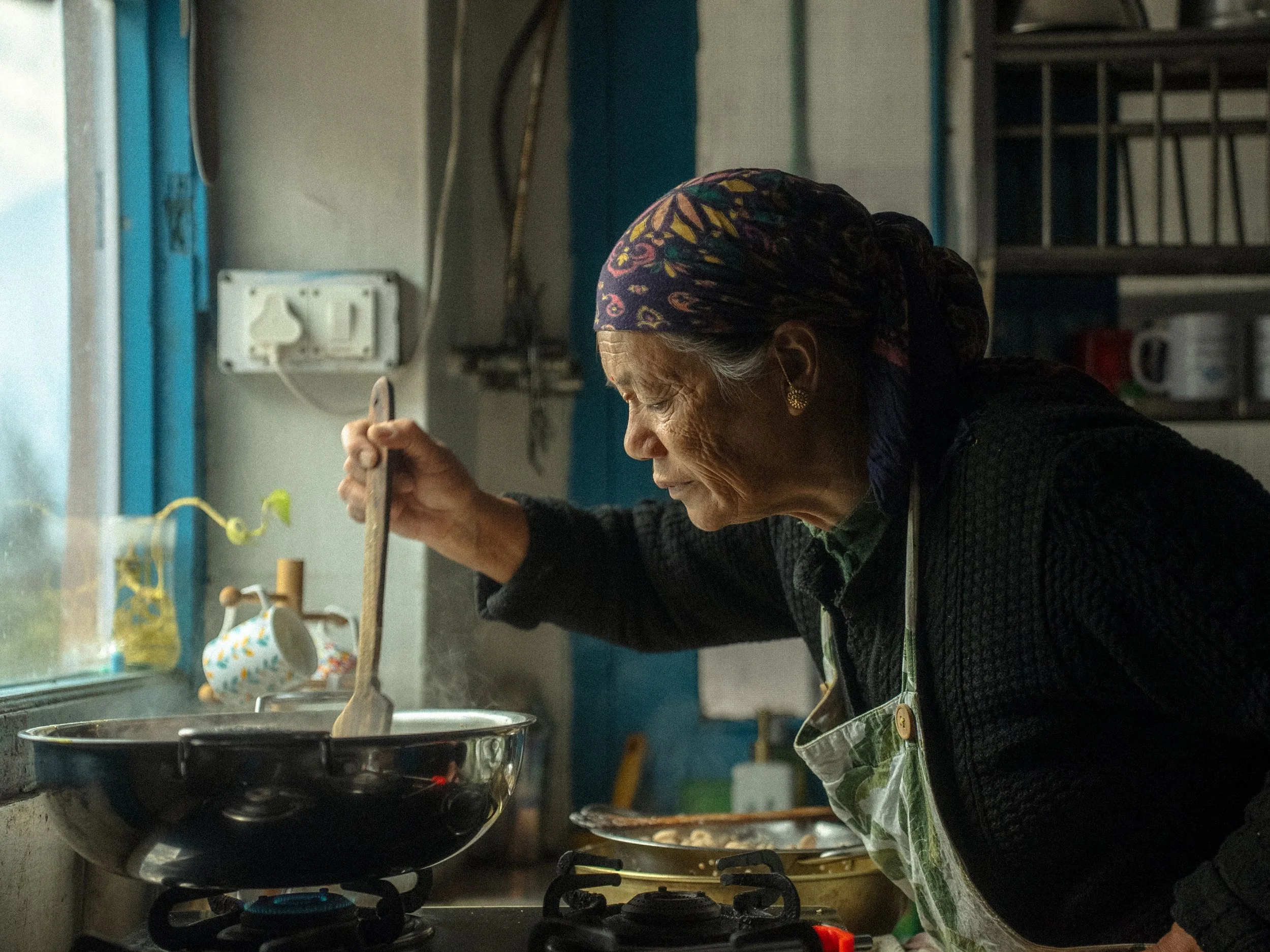Murshidabad's Roshkadam, Made from Poppyseed & Khoya

Roshkadam may not be as widely celebrated as the rosogolla, sandesh or mishti doi but, it has a cult following as the OG Bengali mithai by those who know. Ridhi Agarwal digs deeper.
With one luscious bite, the granular casing of posto (poppy seeds) and a rich inner layer of mawa melts into a puddle on my tongue, making me crave more of that deeply caramelised, sweet yogurt ball. This little-known mithai is roshkadam, a poppy-seed-coated, deep-fried, round chenna ball with origins in West Bengal’s Murshidabad district, named after the Kadamba flower, that it resembles.
Above: The Kadamba flower and the Roshkadam that has been modelled after it
There is no written history on the origins of roshkadam, says Tanushree Bhowmik, a food researcher and culinary historian. “There is only oral history, entangled in the history of Guadiya Vaishnavism in West Bengal,” she says. In the 15th century, when Chaitanya Mahaprabhu, the founder of the Guadiya Vaishnavism was transiting through West Bengal’s Malda district, in a town named Ramkeli, he indoctrinated a discipline under a Kadamba tree (burflower tree). At the time, he was struck by a craving for something “sweet like your heart — encased in something that is solid but filled with ras, a metaphor for sweetness, love, the goodness in life, and humanity.” The confectioner of Malda obligingly created roshkadam.
The original Malda roshkadam, according to Tanushree, was a white rosogulla encased in khoya and covered in roasted poppy seeds. “During the Nawabs’ rule, posto was a prominent ingredient with the Muslims, and many recipes from the time use the ingredient.” From Malda, the sweet travelled afar, and over several iterations. “In Rajsahai (present day Bangladesh), the construct of the sweet is same but the rosogulla is deeply caramelised, almost reddish-brown, and is not as airy or light as the Malda roshkadam. It is also covered in tiny sugar balls, similar to the bal mithai of Nainital,” she says. From Rajsahai, the sweet travelled to other parts of undivided Bengal, including Meherpur (present day Bangladesh) during the British rule in the 1800s.
In Bangladesh, the roshkadam resembles bal mithai, coated in small sugar crystals.
In Dhaka, Bangladesh, the sweet is coated in “sugar balls, just like the ones used in homeopathy drugs,” says journalist Rashad Ahamad. “This roshkadam is an expensive mithai, unlike rosogulla, chom chom, and laddu, with 1 kg selling for 750 Bangladeshi Taka (approx. Rs 570).”
Today, many versions of roshkadam abound — such as the kheer kadam — yogurt balls coated with mawa, paneer, or tiny sugar globules — and available in parts of West Bengal. But the poppy-coated sweet prepared in Murshidabad district is rare; a signature delicacy sold only by a handful of stores.
“It is likely to have arrived from across the border,” says Nilam Saha, the proprietor of Anandamoyee Sweet Home. It is one of the oldest stores in Murshidabad’s Dhulian town, founded by Nilam’s grandfather, Nanigopal Saha, in 1965. Anandamoyee Sweet Home sells roshkadam for for Rs500/kilo. The cost of the sweet is linked with spiralling prices of posto, which today sells at Rs. 2000 per kilo. “No one else uses posto in the region because of the its cost,” says Sukh Kumar Das, aged 60, a karigar who has been working at Nilam’s shop for over 45 years. Roshkadam remains the most popular item on the shop’s menu, surpassing sales of rosogolla, sandesh and mishti doi.
Sukh Kumar learned to make the sweets from the ustaads who were working in the store when he joined. Kumar works in the the lane adjacent to the store, hunched over a big kadai brimming with oil. He deep-fries the chenna balls before tossing them into a sugar syrup — this innermost rosogolla-like layer is called guthi.
“Guthi is always made one day prior, to allow it to cool, and to drain the excess sugar syrup,” he explains. This technique tightens and hardens the guthi, before it is coated with mewa and poppy seeds. If not allowed to rest for a day, the guthi will break when coated with mewa and poppy seeds, with a shorter shelf life. Typically, the sweet lasts up to seven days in the summer, and 10 days in the winter. Sukh Kumar makes an average of 200-300 pieces of roshkadam every day. During wedding season, the numbers go up to 2,000-2,500 pieces because roshkadam is often distributed as a thank-you to the guests.
It may not be as popular as other Bengali sweets, but the roshkadam certainly has its fans.
Ridhi Agrawal is a freelance writer, currently based in Eastern Nepal. She writes on arts, culture, travel and food.
ALSO ON GOYA

